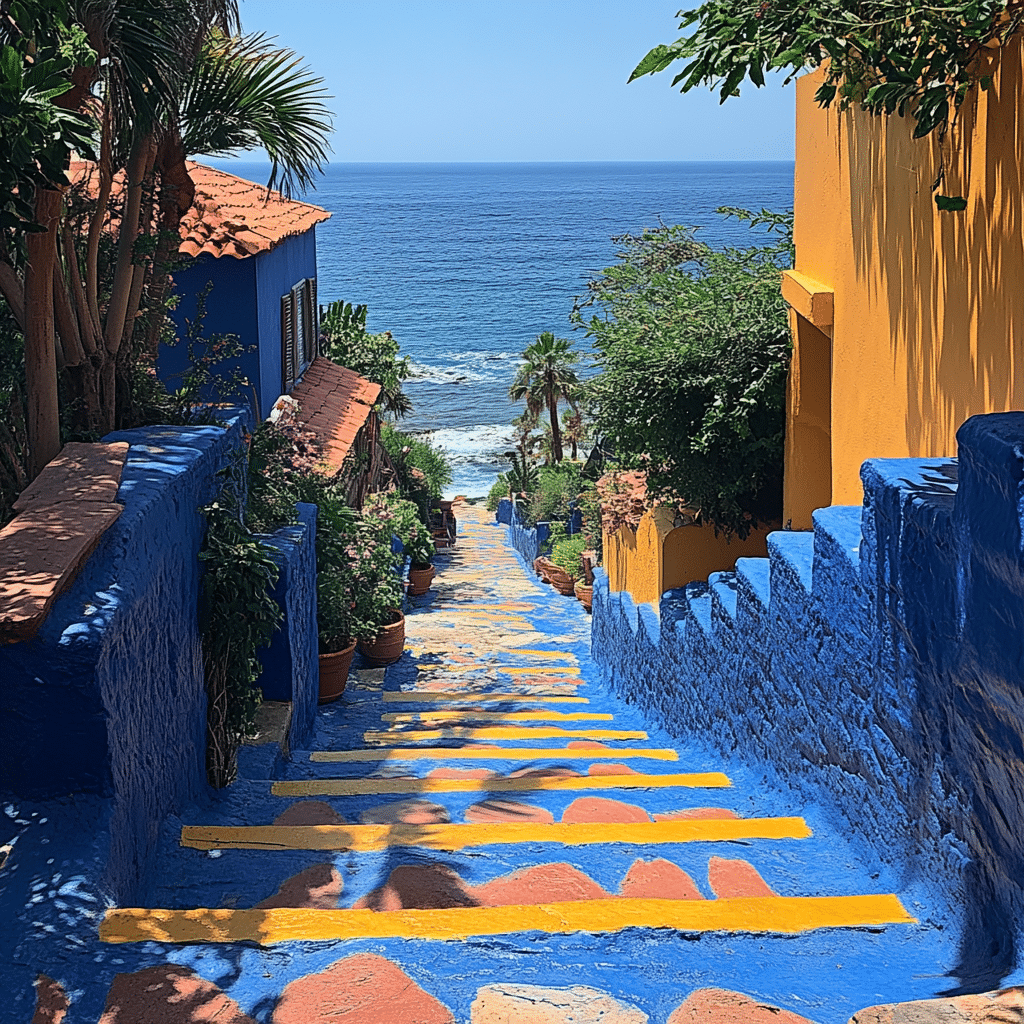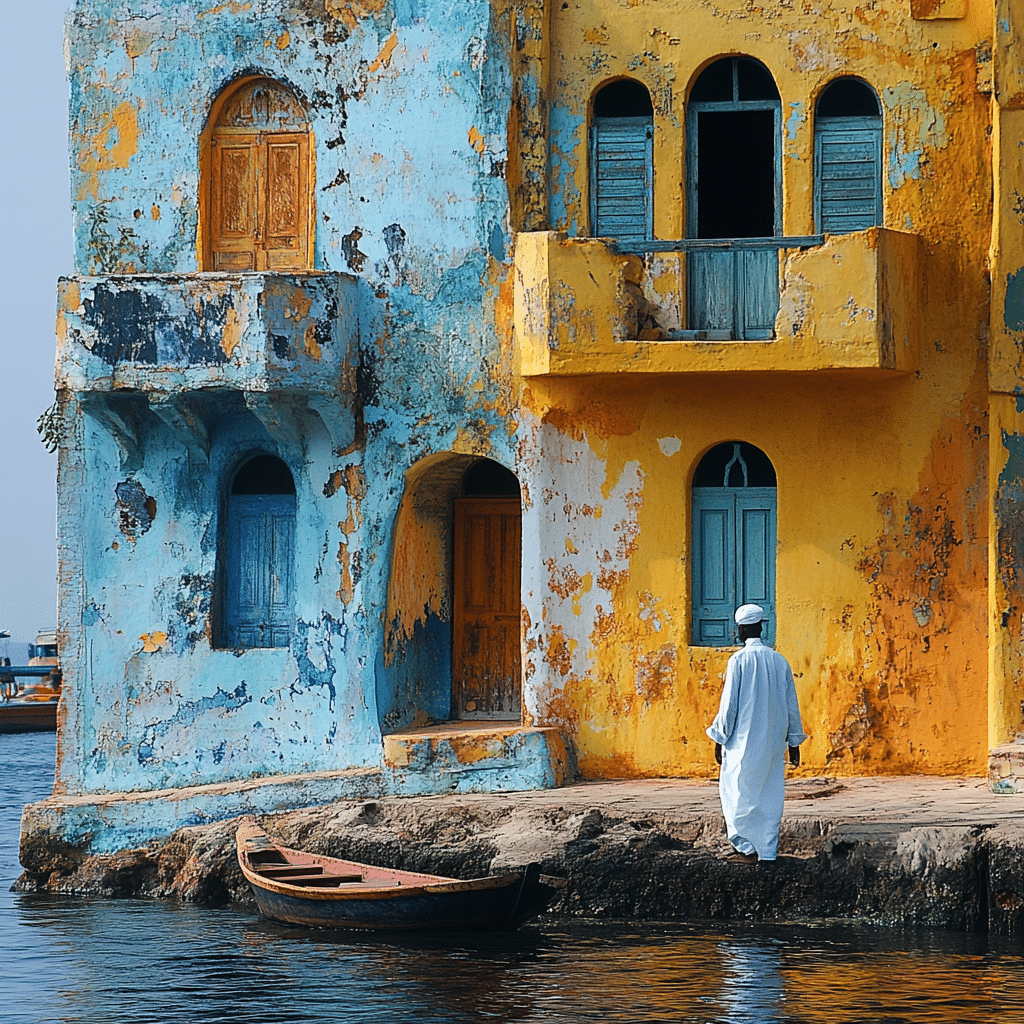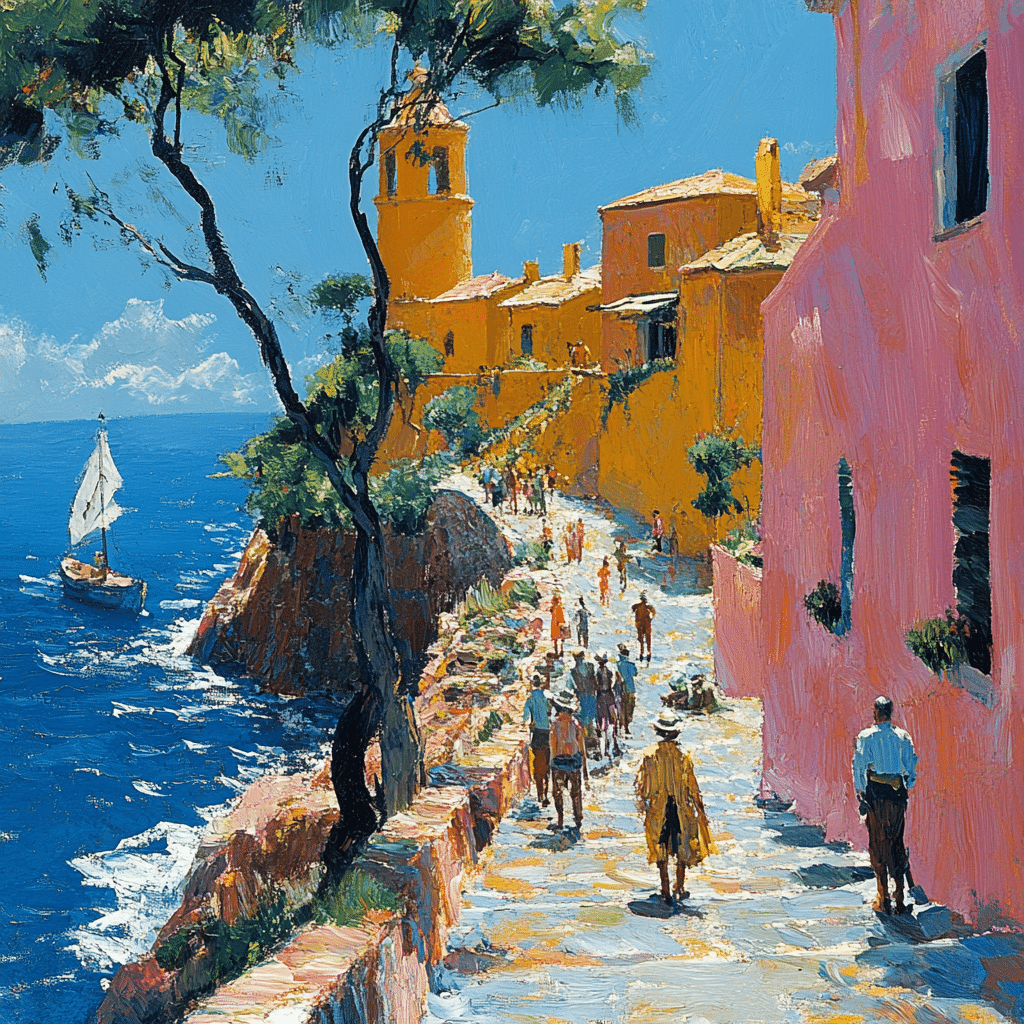Goree Island, a small but historically significant landmass off the coast of Dakar, Senegal, stands as a poignant symbol of the transatlantic slave trade. Since the mid-15th century, the island has played a crucial role in the trafficking of millions of Africans, who were forcibly taken from their homes and subjected to horrific conditions. This article aims to dive deep into Goree Island’s chilling past, explore its cultural impact today, highlight its monuments, discuss ongoing commemorations, and address preservation efforts—all while reflecting on its lasting legacy in global discussions about slavery.
The Historical Significance of Goree Island
Goree Island’s history began with the arrival of Portuguese sailors in 1444, led by Dinís Dias, marking the start of European interaction in the region. From 1536 onwards, the island served as a key center for the Atlantic slave trade, where an estimated 20 million Africans were transported from the mid-1500s to the mid-1800s. Its role was simple yet harrowing—it acted as a slave-holding warehouse, a crucial stop where many enslaved men, women, and children were held before being shipped across the sea.
The construction of the House of Slaves (Maison des Esclaves) in the late 18th century marks a significant moment in Goree’s history. This structure now functions as a poignant museum, visually representing the harrowing experiences endured by the enslaved. Visitors can walk through its walls, listen to revealing stories, and witness artifacts that speak of a time filled with suffering and loss. The museum acts as a powerful educational tool, highlighting the importance of remembering, understanding, and confronting this dark chapter of human history.
Goree Island’s history is not merely a series of events; it embodies the pain of displacement and loss of identity. The indigenous Lebu people were gradually pushed aside as European powers, primarily the French, colonized the land. From 1677, French became the dominant language, and documents were written in French, cementing the cultural transformation initiated by colonialism. The significance of Goree Island transcends its geographical boundaries, representing a history that shaped the identities of countless individuals and communities.

The Top 5 Monuments and Memorials on Goree Island
Goree Island is richly adorned with monuments and memorials that educate visitors about its tragic past. Here are the top five installations that embody the island’s enduring legacy:
| **Category** | **Details** |
|---|---|
| Location | Gorée Island, Senegal |
| Historical Background | – First visited by Portuguese sailors in 1444. |
| – Occupied by the French in 1677, establishing the French language as the dominant language. | |
| – Active in the Atlantic slave trade from 1536 to 1848. | |
| – An estimated 20 million Africans passed through the island between the mid-1500s and mid-1800s. | |
| Cultural Significance | – A pilgrimage destination for the African diaspora. |
| – Promotes dialogue and cultural exchange focused on reconciliation and forgiveness. | |
| Architecture | – Historic European-style architecture with cobblestone streets and bungalows. |
| – No observable cars; a tranquil environment. | |
| Key Attractions | – Slave House Museum (Maison des Esclaves) |
| – Forts and historical sites. | |
| – Cultural events and activities promoting African heritage. | |
| Language | – Primarily French, the last foreign language during the slavery period. |
| Indigenous People | – Originally inhabited by the Lebu people, who were later displaced. |
| Abolition of Slavery | – Slavery was officially abolished in Senegal in 1848. |
| Visitor Experience | – Island offers a peaceful retreat with rich historical context and cultural experiences. |
| Transportation | – Accessible by ferry from Dakar; pedestrian-friendly layout. |
The Cultural Impact of Goree Island Today
Today, Goree Island resonates powerfully in discussions about race, memory, and identity. The prominent themes of displacement, historical trauma, and resilience are reflected in modern Senegalese culture. Various artists, writers, and filmmakers draw inspiration from Goree, using it as a backdrop for their works. For instance, the Senegalese novelist Aminatta Sow Fall often explores themes of slavery and colonial history in her writing, showcasing how Goree continues to inspire contemporary narratives.
Apart from the arts, Goree Island has become a pilgrimage destination for the African diaspora, representing a space for exchange and dialogue. It fosters connections between cultures, tackling ideals of reconciliation and forgiveness. Each year, thousands visit the island, not just to learn about the past but also to engage in conversations around societal healing and unity.
Goree Island’s legacy is unique, acting as a focal point for discussions surrounding history and identity in an increasingly globalized world. The stories told here reflect the struggles and victories of those who came before us, providing a ground for future generations to understand the complexities of racial dynamics and historical injustices.

Ongoing Commemorations and Global Recognition
Every year, Goree Island plays host to various commemorative events, uniting scholars, activists, and descendants of enslaved people in acknowledging a painful past. Events such as the International Memorial Day for the Victims of Slavery and the Transatlantic Slave Trade draw attention to historical injustices and provide educational workshops. These gatherings promote dialogue about slavery’s legacy and encourage meaningful discussions around reparations and racial justice.
During these events, the island serves as a gathering place for knowledge exchange. Participants share personal stories and highlight ongoing struggles faced by descendants of enslaved individuals. Engaging with these narratives fosters a greater understanding of the repercussions of the slave trade and the ongoing quest for equality.
Goree Island’s significance has grown beyond its local impact; it has captured the attention of international organizations advocating for human rights and cultural preservation. The annual commemorative events successfully engage a broader audience, igniting discussions about the need for reparations and recognizing the lingering effects of slavery in society today.
Challenges and Preservation Efforts
Despite its rich history and cultural importance, Goree Island faces numerous challenges. Climate change poses a significant threat, with rising sea levels eroding the coastline and jeopardizing historical sites. The increased frequency of storms further exacerbates this issue, underscoring the urgent need for action to preserve Goree’s heritage.
Moreover, the influx of tourists presents its own set of challenges. While tourism helps raise awareness about the island’s historical significance, it also places immense strain on its infrastructure. Maintaining a balance between visitor engagement and preservation remains crucial.
In response to these issues, both the Senegalese government and international organizations are taking action. Efforts include raising awareness about climate change and implementing sustainable tourism practices. Collaborative initiatives seek to preserve Goree Island’s historical sites while maintaining the authenticity of its narrative—a vital endeavor in ensuring the legacy of this haunting history isn’t lost.
The Importance of Goree Island in Global Discourse on Slavery
Goree Island has transcended its local significance, gaining international recognition as part of a broader discourse on human rights and the legacy of slavery. It serves as a site for activism, where people come together to demand justice and recognition of past injustices. Discussions surrounding reparations, racial justice, and cultural preservation often find their footing in the vital lessons learned from Goree’s history.
The island invites global dialogue, prompting countries and communities to face the uncomfortable truths that accompany their colonial past. As visitors reflect on Goree Island’s legacy, they often carry these insights back home, influencing conversations in their own communities.
Furthermore, organizations working to address issues like racial inequality and slavery’s legacy use Goree as a reference point, fostering alliances among activists. By drawing from the island’s painful past, advocates for justice are better equipped to share their stories and push for meaningful reform in today’s world.
Reflecting on Goree Island’s Lasting Legacy
Goree Island serves as a powerful testament to humanity’s darker chapters. It compels us to remember the past while engaging with ongoing struggles surrounding race, identity, and reconciliation. By reflecting on its significance, we recognize Goree Island not merely as a historical site, but as a living reminder of resilience and strength in the face of adversity.
Visiting Goree and understanding its history is not just about looking back; it is an invitation to engage with the struggles of those who came before us and to confront our contemporary reality. As we learn from this island, may it inspire a commitment to fostering a more equitable future for all.
Goree Island: A Powerful Reminder of the Slave Trade
Captivating History of Goree Island
Located off the coast of Senegal, Goree Island is an emblem of resilience and remembrance. Did you know that this tiny island was once a bustling trading hub during the transatlantic slave trade? The infamous House of Slaves stands as a poignant reminder, with its “Door of No Return” symbolizing the last point of departure for countless enslaved Africans. This powerful site has garnered attention not only for its historical significance but also as a backdrop for numerous cultural events, much like how the work of Grace Jones, the artist, often evokes strong emotions about identity and heritage. Plus, many tourists often take a moment to reflect before a striking installation that captures the island’s tragic past.
Fun Facts About Goree Island
Goree Island has been designated as a UNESCO World Heritage site since 1978, which has helped preserve its historical sites. Isn’t that fascinating? Not only do visitors get to explore the island’s vibrant markets, but they also encounter its rich blend of cultures and traditions. Interestingly, part of the island is home to some of the oldest colonial buildings in West Africa, some of which have been restored with a nod to modern architectural styles. In much the same way that buyers often use a monthly payment calculator for mortgages to stay financially savvy, visitors have to manage their time wisely to soak in everything this unique destination offers.
The Island’s Role Today
Nowadays, Goree Island attracts historians, students, and tourists alike, all eager to learn about its profound history. The island serves as a poignant educational hub about the horrors of slavery. Local guides often draw parallels between the past and present, emphasizing how the impact of slavery resonates today. Just as people need to navigate financial decisions, like when choosing a mortgage bank in California, the journey of understanding this history is crucial. Reminders of resilience are everywhere on Goree Island, enveloping visitors in its compelling narrative while inviting reflection on humanity’s journey toward justice and equality.

How many slaves passed through Gorée island?
An estimated 20 million Africans passed through Gorée Island between the mid-1500s and the mid-1800s, making it a crucial hub during the African slave trade.
What is Gorée island known for?
Gorée Island is known for its dark history as a major center for the slave trade, as well as its beautiful colonial architecture, cobblestone streets, and cultural significance for the African diaspora.
Is Gorée island worth visiting?
Absolutely! Gorée Island offers a unique blend of history and charm, making it a delightful place to visit, with no cars and plenty of sights to see.
What language is spoken on Gorée island?
French is the language that was predominantly spoken on Gorée Island during the slavery period, after French settlers arrived in 1677.
What is the controversy with Goree Island?
The controversy with Gorée Island primarily revolves around its role in the slave trade and the remembrance of the millions who suffered, juxtaposed with its current status as a tourist destination.
Where did most slaves land in the US?
Most slaves who made it to the U.S. landed in places like Charleston, South Carolina, and other ports along the Atlantic Coast, where slave markets thrived.
What does Gorée mean in French?
In French, “Gorée” is thought to mean “the value of the exchange,” reflecting the island’s historical role in trade.
Do you need passport for Gorée Island?
Visitors don’t need a passport for Gorée Island, but it’s always good to have proper identification when traveling.
Where in Africa is the door of no return?
The “Door of No Return” is located on Gorée Island and symbolizes the final departure point for enslaved Africans being shipped to the Americas.
How much does it cost to go to Gorée island?
As for costs, visiting Gorée Island typically ranges from a small fee for the ferry ride to the island, which is around a couple of dollars, so it’s quite affordable.
How long to spend in Gorée island?
Spending a few hours to a full day on Gorée Island is ideal, allowing you to explore its history, sites, and local culture at a nice pace.
What was the House of Slaves used for?
The House of Slaves on Gorée Island served as a holding place for enslaved people before their shipment to the Americas, making it a significant reminder of the slave trade.
How many slaves went through Gorée island?
It’s estimated that the same 20 million Africans passed through Gorée Island, making it an important landmark in the history of the slave trade.
What are some interesting facts about Gorée island?
Some interesting facts about Gorée Island include its designation as a UNESCO World Heritage site, its peaceful ambiance today, and its ongoing role as a space for cultural discussion and remembrance.
What nationality is Gorée?
Gorée Island is predominantly Senegalese in nationality, as it lies off the coast of Senegal and is part of its cultural and historical identity.



